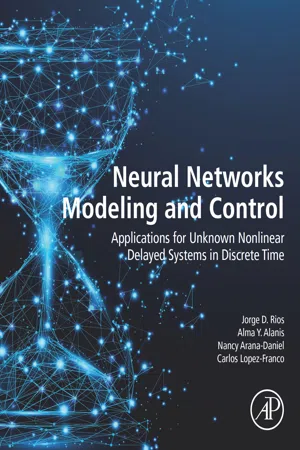1.1 Systems with delay
Whenever information, material, or energy is transported from one point to another there is an associated delay; responses are not instantaneous. According to this approach all systems have delays; however, only those systems where the delay time between the application of the inputs or state variables and their response is significant are considered as systems with time delay [46,77].
Delays occur due to limitations of system components for processing information or transporting information or materials [46,77].
1.2 System model
A system model is a mathematical representation of a system; it is represented in the form of differential equations for dynamic systems in continuous time and in the form of difference equations for dynamic systems in discrete time [3,51].
A model of a system is usually required for designing a control law for such a system. Furthermore, with a model of a system, among other things, it is possible to make simulations, predictions, emulations, failure detection, analysis, etc. [51].
1.3 Neural identification
System identification is the process of obtaining a mathematical model of a system based on data obtained from previous experiments performed with the system under consideration. There are several methodologies to carry out system identification; however, the ones based on artificial neural networks stand out [23,51].
Neural identification consists of selecting a neural network model and adjusting its weights according to an adaptation law so that the response to an input, the response of the neural network, and the response of the system are the same [51].
1.4 Neural state observers
Most of modern control techniques require the knowledge of all the state variables of the system to be controlled [19,51]. This matter can be managed using a sufficient number of sensors, which are electronic components that detect and respond to an input from the environment and whose output is a value that can be used in a subsequent process [61]. However, sensors usually present the following disadvantages: they can be expensive, they can become very noisy, they can in some cases induce delays in the system, and occasionally, there are no existing sensors to measure all the variables that are required, among others [19,51,61].
Observers estimate system variables based on the available signals and previous information of the system [19]. The observers which use neural networks are called neural observers. They use the neural networks to estimate unmodeled dynamics or even the whole system. These observers have advantages such as adaptability, ease of design, and robustness against noise [63].
1.5 Neural block control
Neural block control is a methodology used for the controlling of nonlinear systems. This methodology, in order to synthesize a control law, uses a model of a system in controllable block form, which is obtained by a neural identifier or a neural observer based on recurrent high-order neural networks [60].
1.5.1 Discrete sliding modes
Control by sliding modes is a widely used tool for the control of nonlinear systems; it enables tracking of trajectories even in the presence of external and internal disturbances [60,67].
The control law of continuous sliding modes requires an infinite commutation frequency that excites unmodeled dynamics causing chattering phenomena [67]. The control action of discrete sliding modes depends on a control action known as an equivalent control which is a continuous function of the state [60].
1.5.2 Inverse optimal control
The principle of optimal control is to determine a control law that forces the system to satisfy certain restrictions and at the same time minimizes a performance criterion. Nonetheless, this requires the solution of the Hamilton–Jacobi–Bellman equation, which is not an easy task. The inverse optimal control evades solving this equation. First, a stabilization feedback control is developed and then it is established which cost function is optimized [59].
1.6 Problem statement
The study of systems with time delay has become an important field of research due to its frequent appearance in engineering applications [36,72].
To design a control law for a system a mathematical representation, known as system model, of the system is needed. Such a model can also be used for other motives, such as fault detection, simulation, and system control. System identification is a practical option to infer a system model [51] where the neural identification techniques stand out. Also, the knowledge of all the state variables is usually needed for controlling purposes. However, knowing all the state variables is not always possible, and the use of sensors and observers is an option to get estimations of those nonaccessible state variables. In this manner, neural networks have been incorporated in the state observer design due to their characteristics which allow them to approximate nonmodeled dynamics and nonaccessible state variables [19,63].
Among the neural networks used for system identification and state observers, the recurrent high-order neural networks (RHONNs) have characteristics like flexibility, capacity of approximation, robustness against noise, dynamic behavior, and online and offline trainability [63], which render them good candidates for the identification of complex nonlinear systems as well as state estimation of this kind of systems.
Furthermore, most systems are implemented in discrete time; this trend is mainly due to the advantages of working with digital systems instead of analog ones [52].
In this book, it is proposed to use RHONNs trained online using an algorithm based on the extended Kalman filter (EKF), to design identifiers and observers for discrete-time nonlinear systems with unknown delays. These RHONNs will have as their primary characteristic that they only need the measurements of the available state variables without the need of other knowledge of the real mathematical model to perform their task. In the case we do not have access to the measurement of all state variables, these RHONNs can also be designed to estimate those missing state variables. Also, with the model obtained by the RHONN identifier or the RHONN observer, the identifier–controller scheme and observer–controller scheme are presented in this book.
